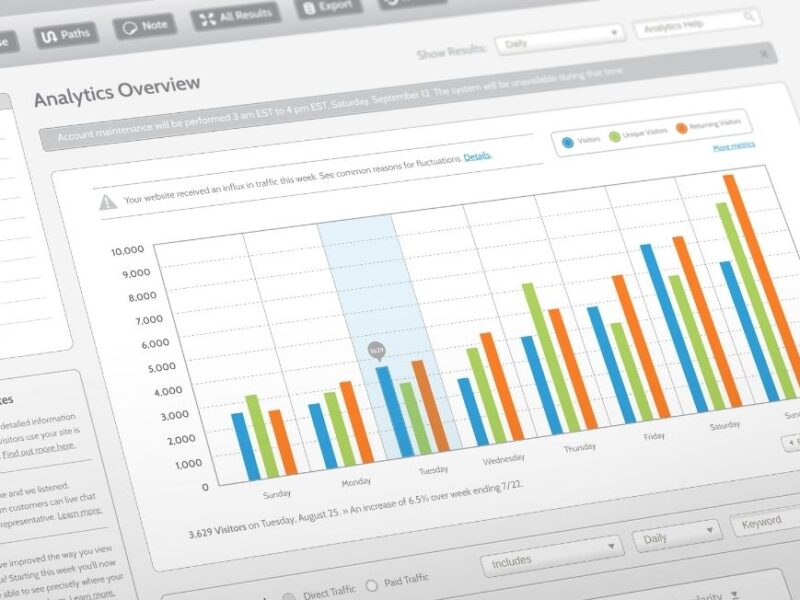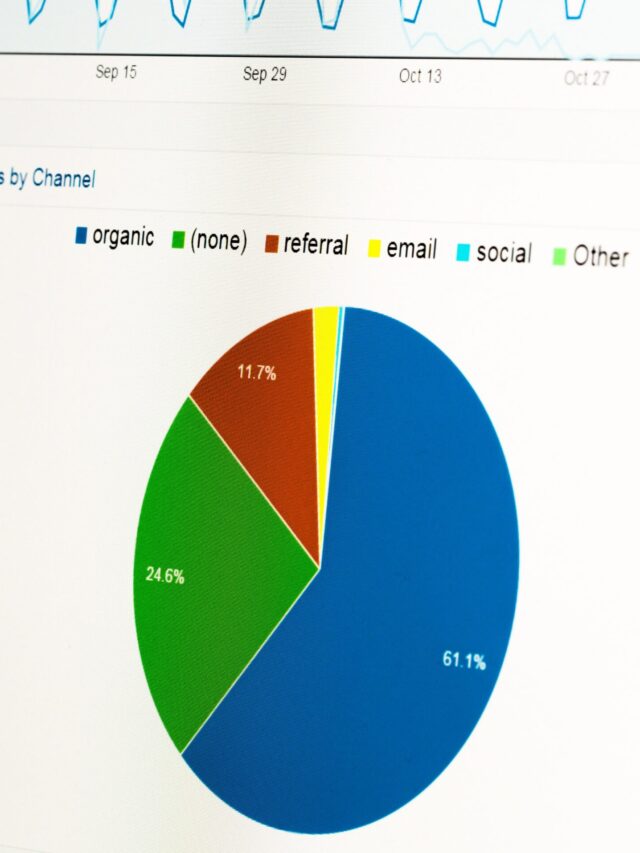On this page you will read detailed information about Google Analytics.
In the digital age, understanding your online audience is crucial, and Google Analytics stands as a powerful tool designed to provide this insight. As a business professional or digital marketer, you recognize the importance of data-driven decision-making. Google Analytics offers a comprehensive suite of features that track and analyze user interactions on your website, affording you the ability to refine strategies and enhance user experience. This article will delve into the essentials of Google Analytics, exploring its functionalities and significance in today’s competitive market. Discover how leveraging this tool can transform your approach to achieving business objectives and optimizing digital presence.
What is Google Analytics? Exploring Its Core Features
Understanding Google Analytics
Google Analytics stands as a pivotal tool for digital marketers and business analysts alike, offering in-depth insights into website performance and user interactions. But what is Google Analytics specifically? Essentially, it is a comprehensive platform that tracks and reports website traffic, providing a wealth of data to aid in understanding and optimizing user engagement.
Core Features of Google Analytics
At the heart of Google Analytics are its core features, which enable users to gain a nuanced understanding of their digital landscape.
- Audience Reports: These provide detailed insights about who is visiting your website. Demographic data, such as age, gender, and location, is readily available, helping tailor marketing strategies to the target audience.
- Acquisition Overview: This feature reveals how users are finding your website. Whether through search engines, social media, or direct visits, understanding these pathways is crucial for optimizing marketing efforts.
- Behavior Flow: By illustrating the path users take through your site, this report highlights which pages engage visitors the most and where improvements can be made to enhance user experience.
- Conversion Tracking: A vital tool for e-commerce, this feature tracks sales, lead generation, and other goal completions, providing clear data on the effectiveness of marketing campaigns.
The Importance of Google Analytics
Understanding what Google Analytics offers is only part of the equation; its significance lies in its ability to transform raw data into actionable insights. By leveraging these insights, businesses can refine their digital strategies, enhance user experience, and ultimately drive growth. As the digital landscape continues to evolve, mastering the core features of Google Analytics becomes an indispensable skill for staying ahead of the competition.
Why Google Analytics Matters for Your Business
Understanding the Role of Google Analytics in Business Success
In the digital age, where data drives decisions, understanding what is Google Analytics and how it applies to your business is crucial. Google Analytics serves as the cornerstone of any data-driven strategy, providing invaluable insights that traditional metrics simply cannot offer. This tool offers a comprehensive look into user behavior, traffic sources, and conversion paths, empowering you to make informed decisions that propel your business forward.
Harnessing Data to Improve Customer Engagement
Google Analytics not only tracks website traffic but also delves deep into user interaction and engagement. By analyzing visitor patterns, businesses can tailor their content and marketing strategies to align with audience preferences, thereby enhancing customer satisfaction and boosting retention rates. Such data-driven insights allow for the optimization of user experience, ensuring that every interaction is meaningful and relevant.
Driving Informed Marketing Strategies
The detailed reports generated by Google Analytics are pivotal for crafting effective marketing campaigns. By understanding which channels are delivering the most traffic, and which keywords lead to conversions, businesses can allocate their resources more efficiently. This targeted approach reduces waste and maximizes return on investment, ensuring that your marketing efforts are both cost-effective and impactful.
Enhancing Business Growth and Sustainability
Ultimately, the insights gained from Google Analytics inform strategic decisions that foster growth and sustainability. Whether it’s refining product offerings, adjusting pricing strategies, or exploring new markets, the data-driven approach facilitated by Google Analytics is indispensable. In a competitive landscape, such intelligent decision-making can be the key differentiator that sets your business apart.
In summary, Google Analytics is not just a tool but a vital component of modern business strategy. By leveraging its capabilities, businesses can unlock new opportunities and maintain a competitive edge in the ever-evolving market landscape.
How to Get Started with Google Analytics
Setting Up Your Google Analytics Account
Getting started with Google Analytics begins with creating an account. Visit the Google Analytics website and sign in using your Google account credentials. If you don’t have a Google account, you’ll need to create one first. Once signed in, you can create a new property, which will represent your website or app. During this process, you’ll be asked to input essential information such as the property name, reporting time zone, and currency.
Configuring Tracking Code
After setting up your property, Google Analytics provides a unique tracking code. This JavaScript code snippet needs to be embedded in every page of your website. It’s crucial to place this code in the header section to ensure it captures data before the page fully loads. If you’re using a content management system like WordPress, there are plugins available that simplify this process by automatically inserting the tracking code for you.
Setting Goals and Conversions
To fully leverage what Google Analytics offers, it’s essential to set goals. Goals allow you to measure how well your site meets specific objectives. This could be anything from a visitor making a purchase to subscribing to a newsletter. Navigate to the Admin section, and under the View column, select Goals. From there, you can set up templates or custom goals suited to your business needs.
Exploring Google Analytics Reports
Once the tracking code is active and goals are set, data will start flowing into your account. Google Analytics offers a plethora of reports that provide insights into user behavior, acquisition channels, and more. Familiarize yourself with key reports like Audience, Acquisition, and Behavior to understand how users interact with your site and where improvements can be made.
Getting started with Google Analytics might seem daunting at first, but by following these steps, you can unlock a wealth of information that will help you make data-driven decisions to enhance your online presence.
In the previous post, we had shared information about Discover Top 5 Techniques to Examine Competitors Ads, so read that post also.
Advanced Techniques to Maximize Google Analytics
Utilize Custom Dimensions and Metrics
One of the most powerful features of Google Analytics is the ability to create custom dimensions and metrics. This enables you to tailor the data you collect to fit your specific business objectives. By defining custom dimensions, you can gather insights beyond the default metrics offered. For example, you might track the performance of different marketing campaigns or analyze user engagement based on membership levels. Custom metrics, on the other hand, allow you to quantify data points unique to your organization, which can be particularly useful in measuring aspects like user satisfaction or content value.
Leverage Enhanced E-commerce Tracking
If your business is in the e-commerce sector, implementing enhanced e-commerce tracking is crucial. This advanced feature of Google Analytics provides detailed insights into shopping behavior, from product impressions and clicks to transactions and refunds. By understanding the full customer journey—from product views to purchases—you can optimize your marketing strategies and website layout to boost sales. Enhanced e-commerce tracking also helps identify potential drop-off points, enabling you to address issues that may hinder conversions.
Implement Audience Segmentation
Audience segmentation is a vital tool in maximizing the potential of Google Analytics. By dividing your visitors into distinct groups based on demographics, behaviors, or acquisition channels, you can tailor your marketing strategies to meet the needs of different audience segments. This level of granularity helps in crafting personalized experiences for your users, ultimately leading to higher engagement and conversion rates. Additionally, segmentation allows for more precise data analysis, offering a clearer picture of how various audience groups interact with your site.
By mastering these advanced techniques, you can transform Google Analytics from a basic reporting tool into a comprehensive solution for data-driven decision-making, propelling your business towards success.
Common Mistakes to Avoid When Using Google Analytics
Ignoring Data Accuracy
One of the most prevalent mistakes users make is neglecting the accuracy of their data. Without precise data, the insights drawn from Google Analytics can be misleading. To ensure data accuracy, it is crucial to implement tracking codes correctly, confirm the absence of duplicate tags, and regularly audit your account settings. This helps maintain the integrity of the information you rely on to make strategic decisions.
Overlooking Goal Tracking
Failure to set up and monitor goals effectively can hinder your ability to measure the success of your digital strategies. Goals in Google Analytics allow you to track specific user actions that align with your business objectives, such as completed purchases or filled-out contact forms. By not configuring goals, you miss out on understanding how well your website converts visitors into customers, making it difficult to quantify and enhance your digital marketing efforts.
Misinterpreting Metrics
Another common pitfall is misinterpreting the metrics provided by Google Analytics. For instance, users often focus on pageviews or sessions without considering metrics like bounce rate or average session duration, which provide deeper insights into user engagement. To avoid this, take the time to learn what each metric signifies and how it aligns with your business goals. This comprehensive understanding will help you make more informed decisions.
Neglecting Segmentation
Lastly, failing to utilize segmentation can lead to a lack of depth in your analysis. Segmentation allows you to isolate specific types of traffic, such as new vs. returning visitors or traffic from different geographic regions. By ignoring segmentation, you overlook nuances in user behavior that could reveal opportunities for targeted improvements. Implementing segmentation is vital to gaining actionable insights that drive performance improvements.
By avoiding these common mistakes, you can unlock the full potential of Google Analytics and gain a clearer understanding of what drives your online success.
Conclusion
In conclusion, understanding Google Analytics is indispensable for anyone looking to optimize their digital presence. By harnessing its powerful insights, you can make informed decisions that drive engagement and growth. Whether you manage a small blog or a large e-commerce platform, Google Analytics empowers you to track user behavior, measure conversion rates, and refine your strategies with precision. As digital landscapes evolve, staying adept with such tools ensures you remain competitive and relevant. Embrace Google Analytics to not only understand your audience better but also to transform data into actionable strategies that propel your business or project forward.
Disclaimer
The content published on the Marketyra blog is for educational and informational purposes only. While we strive to share accurate and up-to-date digital marketing tips, strategies, and trends, we do not guarantee any specific results. Readers are advised to use their own judgment before applying any tips or advice provided. Marketyra is not liable for any losses, damages, or issues arising from the use of blog content.
So friends, today we talked about Google Analytics, hope you liked our post.
If you liked the information about Google Analytics, then definitely share this article with your friends.
👉 Need help with SEO or digital marketing services?
Feel free to call us at 📞 +91-9306925861, email us at 📧 admin@marketyra.com to get in touch!







